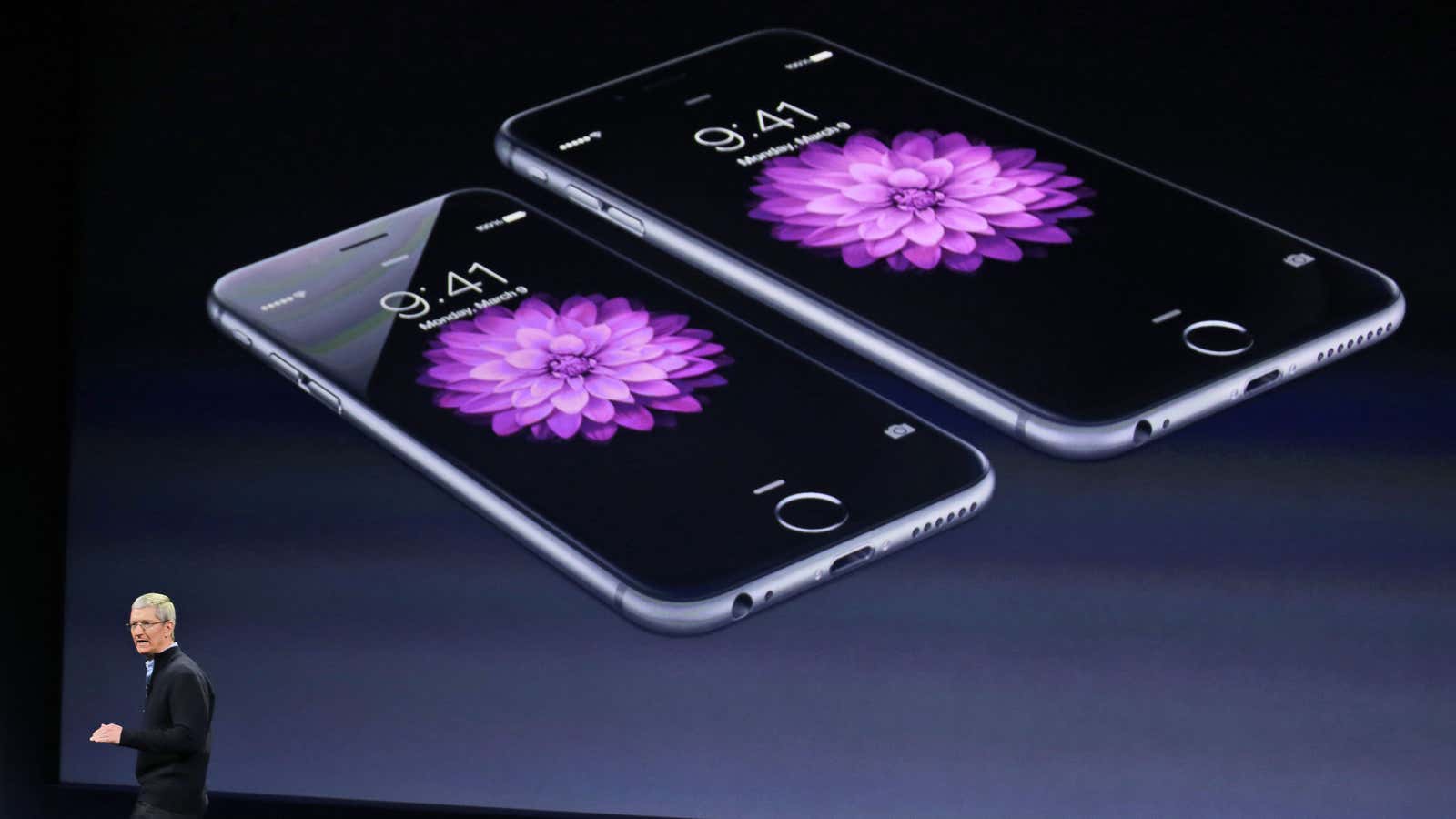It looks like Apple is getting ready for a world without the home button.
CNN reported today that the Cupertino, California, company had quietly acquired 26 of 31 patents from biometric security company Privaris between 2012 and 2014. Based in Charlottesville, Virginia, the startup specializes in integrating fingerprint readers into touchscreens.
Embedding Apple’s Touch ID fingerprint sensor directly onto the display would allow the company to design its iPhones and iPads without any physical buttons on the front (there are still volume controls on the side). Such a design would allow Apple to increase the size and resolution of its displays without having to increase the devices’ physical dimensions.
Apple did not immediately respond to a request for comment.
To date, the home button has been a fixture of all iPhones and iPads, allowing people to easily get back to the main screen (single click), switch between apps (double click), use the devices’ accessibility features (triple click), as well as login and authorize purchases (Touch ID). For those who struggle with new technology, the button’s always represented a fail-proof way to return to the familiar home screen.
But Apple’s the type of company that likes to challenge the way consumers think about computing, nudging them toward new habits along the way. It sparked outrage initially when it removed the floppy drive from the iMac in 1998—and then it got rid of the phone jack (MacBook, MacBook Pro 2006), ethernet port (MacBook Air 2008), CD/DVD player (MacBook Air 2008), and most recently the dedicated charging port and all USB ports from its new 12-inch MacBook. The last of those examples is just a few months old, but in all the prior cases, Apple (and in particular Steve Jobs) had the foresight to realize those ports would become obsolete. It seemed silly to design around them.
Apple is already beginning to move toward a post-home-button future. There is no such button on its latest mobile product, the Apple Watch. Instead, the company made its digital assistant Siri a central part of the user experience and added an unobtrusive digital crown on the side to help users navigate and make selections. To make up for the lack of a home button, the iPhone could borrow some of the watch’s interactions—for example, using motion (the phone’s accelerometer) to turn on the screen, or force touch (a longer tap on the Apple Watch) to return to home.
